


Unwinding Your Senses And Elevating Well-Being
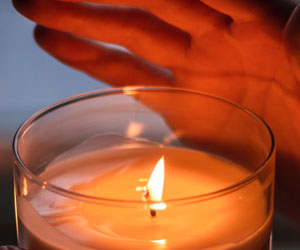
In the bustling world we live in, finding moments of peace and relaxation is increasingly vital for our physical and mental health. Aromatherapy, a practice that harnesses the power of scents to influence mood and well-being, has gained immense popularity in recent years. One of the most enjoyable and accessible ways to indulge in aromatherapy is through scented candles. These candles not only illuminate our spaces but also infuse the air with soothing and invigorating fragrances, making aromatherapy an integral part of our daily lives.
The Science Of Aromatherapy
Aromatherapy is a holistic healing practice that uses essential oils, which are extracted from plants, to promote physical and emotional well-being. These essential oils contain natural compounds that have a range of therapeutic benefits. When inhaled, these compounds interact with the olfactory system and the brain, triggering various responses.
Aromatherapy through candles operates on this very principle. As the candle burns and releases the fragrance of the essential oils blended into the wax, these scents enter our respiratory system, affecting our mood, stress levels, and overall health.
Choosing The Right Aromatherapy Candle
The journey into the world of aromatherapy candles begins with selecting the right candle for your needs. Here are a few factors to consider:
Fragrance: The choice of fragrance depends on your goals. Lavender is known for its calming properties, making it perfect for relaxation and sleep. Citrus scents like lemon and orange are invigorating and ideal for boosting energy and focus.
Quality: Ensure that the candle you choose uses high-quality essential oils. The purity of the oils can significantly affect the therapeutic benefits.
Wax Type: Natural waxes like soy and beeswax are often preferred for aromatherapy candles because they burn cleanly and don't produce harmful toxins.
The Benefits Of Aromatherapy Candles
Stress Reduction: Aromatherapy candles can alleviate stress and anxiety. Scents like lavender, chamomile, and rose promote relaxation and tranquility, helping to calm the mind after a long day.
Improved Sleep: Creating a bedtime ritual with lavender or cedarwood scented candles can improve sleep quality. These scents can help induce a sense of calm, making it easier to unwind and drift into a restful slumber.
Enhanced Focus: Citrus scents like lemon, orange, and grapefruit can boost alertness and concentration. Lighting such candles while working or studying can help enhance productivity.
Mood Elevation: Aromatherapy candles can elevate your mood and provide a sense of happiness and positivity. Scents like jasmine and ylang-ylang are known for their mood-enhancing properties.
Relief From Ailments: Aromatherapy candles can also help with specific ailments. Peppermint and eucalyptus can ease congestion and improve breathing, while ginger and cardamom can soothe digestive discomfort.
Incorporating Aromatherapy Into Your Daily Life
Aromatherapy through candles offers an easy and convenient way to integrate this practice into your daily life. You can use scented candles during your morning meditation, as part of your evening relaxation routine, or simply to create a soothing ambiance in your home.
Aromatherapy through candles is a delightful and effective way to indulge in the therapeutic benefits of scents. These candles not only fill your space with enticing fragrances but also contribute to your overall well-being. Whether you seek relaxation, energy, focus, or simply a boost in mood, aromatherapy candles can be your trusted companions in enhancing your daily life.
A Glimpse Into Monastery Brewing
 The Origins Of Monastery Brewing: The roots of monastic brewing can be traced back to medieval Europe, when monasteries were not only centers of spirituality but also hubs of agriculture and craftsmanship. Monks, skilled in cultivation and brewing, often brewed beer to support themselves and their communities. The monastic brewing tradition was born out of necessity and evolved into an art form celebrated for its unique and high-quality beers.
The Origins Of Monastery Brewing: The roots of monastic brewing can be traced back to medieval Europe, when monasteries were not only centers of spirituality but also hubs of agriculture and craftsmanship. Monks, skilled in cultivation and brewing, often brewed beer to support themselves and their communities. The monastic brewing tradition was born out of necessity and evolved into an art form celebrated for its unique and high-quality beers.
Brewing As A Form Of Self-Sufficiency: Monasteries were largely self-sustaining communities, and brewing became a valuable source of income for these religious orders. Monks brewed beer for their own consumption and to trade with neighboring communities. The high-quality beer produced within the monastery walls garnered a reputation for excellence and, over time, became an essential part of monastic life.
Brewing's Role In Monastic Life: For many monastic orders, brewing was not just a means of financial support; it was also deeply entwined with their way of life. Brewing was seen as a form of prayer, a means of connecting with the divine.
Finding Serenity In Creativity
 One of the most immediate benefits of crafting for inner peace is stress reduction. Engaging in a creative project allows you to temporarily escape from the whirlwind of everyday life. As you immerse yourself in the craft, your focus shifts away from daily worries, and you experience a calming sense of flow and mindfulness. This mental break can significantly lower stress levels and promote relaxation, which, in turn, leads to a greater sense of well-being.
One of the most immediate benefits of crafting for inner peace is stress reduction. Engaging in a creative project allows you to temporarily escape from the whirlwind of everyday life. As you immerse yourself in the craft, your focus shifts away from daily worries, and you experience a calming sense of flow and mindfulness. This mental break can significantly lower stress levels and promote relaxation, which, in turn, leads to a greater sense of well-being.
Crafting is also a practice of mindfulness. When you're deeply absorbed in a creative project, you enter a meditative state where you lose track of time and are entirely present in the moment.






Tips For Every Enthusiast
 3. Explore Different Wine Glasses: The shape of your wine glass can impact your wine appreciation experience. Specific glass shapes are designed to enhance the aromas and flavors of different wine types. Investing in a set of quality wine glasses can make a noticeable difference in your tasting experience.
3. Explore Different Wine Glasses: The shape of your wine glass can impact your wine appreciation experience. Specific glass shapes are designed to enhance the aromas and flavors of different wine types. Investing in a set of quality wine glasses can make a noticeable difference in your tasting experience.
4. Understand The Importance Of Temperature: Serving wine at the appropriate temperature is vital. Reds, whites, and sparkling wines all have their ideal serving temperatures. Generally, red wines are served slightly warmer than white wines. Invest in a wine thermometer to ensure you're serving your wine at the right temperature.
5. Learn How To Pair Wine With Food: Food and wine pairing can be a magical combination that enhances both the meal and the wine. Certain wines complement specific dishes, bringing out the best in both. For example, try pairing a rich, red Bordeaux with a well-marbled steak or a crisp, acidic Sauvignon Blanc with seafood. Experimenting with pairings is an exciting part of wine appreciation.
6. Start A Tasting Journal: Consider keeping a wine tasting journal to document your experiences. Note the wines you've tried, your impressions, and any interesting details. Over time, this journal can become a valuable reference, helping you remember your favorites and charting your wine journey.
7. Attend Wine Tastings And Events: Wine tastings and events provide a unique opportunity to sample a variety of wines and learn from experts. Local wine shops, wineries, and wine clubs often host tastings, so keep an eye out for these opportunities to expand your palate and knowledge.
The Path To Healthier, Radiant Skin And Self-Confidence
 Understanding The Toxins: Non-toxic beauty advocates for the avoidance of harmful chemicals commonly found in many conventional beauty products. These chemicals, such as parabens, phthalates, formaldehyde, and artificial fragrances, have been associated with various health concerns, including allergies, hormonal disruption, and even cancer.
Understanding The Toxins: Non-toxic beauty advocates for the avoidance of harmful chemicals commonly found in many conventional beauty products. These chemicals, such as parabens, phthalates, formaldehyde, and artificial fragrances, have been associated with various health concerns, including allergies, hormonal disruption, and even cancer.
Clean Ingredients: Non-toxic beauty products are formulated with clean, safe ingredients. This means they exclude harmful chemicals and replace them with natural, organic, and plant-based alternatives. For example, clean skincare often uses ingredients like aloe vera, shea butter, and essential oils.
Sustainability Matters: Non-toxic beauty goes hand in hand with sustainability. Brands that champion non-toxic beauty often focus on eco-friendly packaging and sustainable sourcing of ingredients. By reducing their environmental footprint, they align with the principles of environmental consciousness.
Transparency And Accountability: Non-toxic beauty brands are known for their transparency. They provide clear information about the ingredients they use, their sourcing, and their production processes. This empowers consumers to make informed choices about the products they apply to their skin.
Cruelty-Free: Many non-toxic beauty brands are committed to cruelty-free practices. They don't test their products on animals, aligning with the values of ethical consumerism.
Non-Toxic Makeup: Non-toxic beauty extends beyond skincare to include makeup products. Non-toxic makeup brands provide a range of clean cosmetics, from foundation and lipstick to mascara and eyeshadow, offering a safer alternative for enhancing beauty.


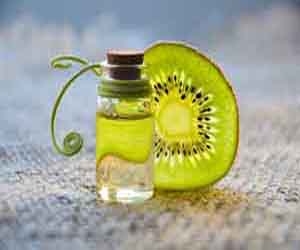
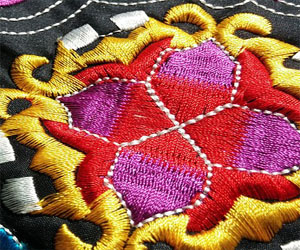
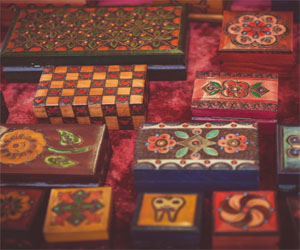
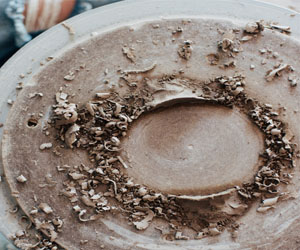
The Beauty Of Green Handmade Goods
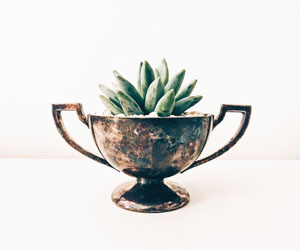 Artistic Innovation Meets Sustainability
Artistic Innovation Meets Sustainability
Green handmade goods are a testament to the union of creativity and environmental responsibility. Crafters and artisans across the globe are channeling their talents to produce items that not only serve a functional or decorative purpose but also adhere to eco-friendly principles. These goods are often made using natural or repurposed materials, creating a harmonious blend of artistry and sustainability.
Supporting Local Economies
One of the significant advantages of green handmade goods is their role in supporting local economies. Artisans and crafters, often small-scale businesses or individuals, contribute to their communities by crafting unique items. This helps strengthen local economies and reduces the carbon footprint associated with mass-produced, globally distributed products.
A Reduction In Waste
The process of creating green handmade goods encourages a reduction in waste. Many artisans rely on repurposed or upcycled materials, diverting items that might have otherwise ended up in landfills. The upcycling trend, in particular, is a testament to the innovative and sustainable approach taken by crafters.
Customization And Personalization
Green handmade goods offer a level of customization and personalization that is often lacking in mass-produced items. Artisans can tailor their creations to meet the unique needs and preferences of their customers. This not only reduces overconsumption but also fosters a deeper connection between the product and its owner.